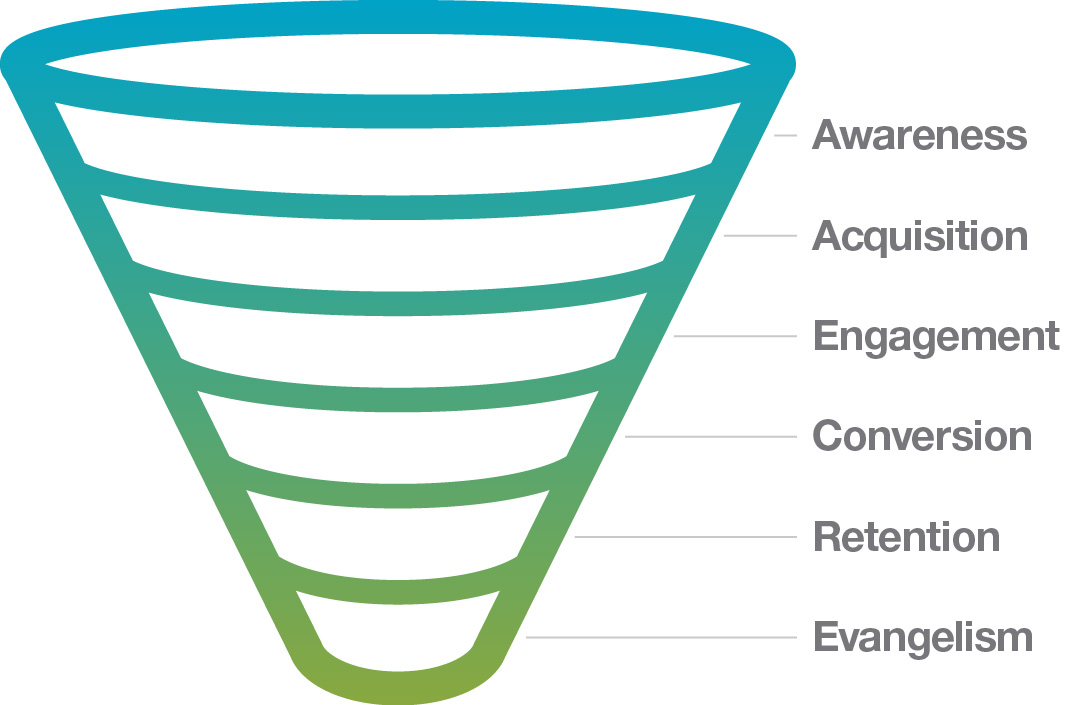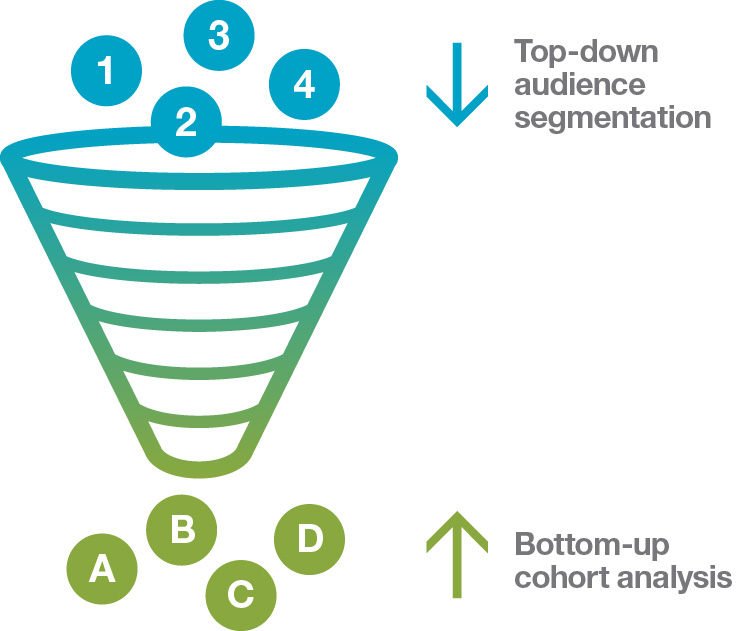Marketing is one of those words that seems to have a different definition depending on who you ask.
If you explore the huge volume of resources, history, and commentary out there regarding marketing, it quickly becomes obvious that these voices have little to do with each other. It’s hard to believe that they all describe aspects of the same general craft.
I work with companies across a wide range of industries and levels of scale, so it helps to have frameworks that are easy to understand and broadly applicable.
I’ve written previously that business strategy is essentially about opportunity—seeing clearly what you want and how you will apply physical and financial capital to make it happen.
I’ve also written that brand strategy is essentially about relationships—cultivating deliberate long-term bonds with specific groups.
Marketing strategy is the last piece and is essentially about communication—what you say and (equally important) how you listen.
Communicating within a funnel
This definition of marketing is perhaps so simple that I can risk complicating it slightly. I’ll do so by introducing a classic marketing framework called the customer acquisition funnel, purchase funnel, or sometimes just the marketing funnel.

Everyone labels this framework differently, but the general concept is more important than the details.
If you’re unfamiliar with the tool, one important thing to note is that at each step of the funnel, you lose a very large portion of your audience. Not all people who become aware of your brand proceed to visit your website. Not all of those window shoppers pay you money. And not all of those first-time customers come back, etc.
When many people think of marketing, they picture activities at the top of the funnel that create awareness or drive new traffic: TV ads, promotions, blimps, PR, etc. But savvy marketers know that the most value is at the bottom of the funnel, working with the existing brand evangelists who will sing your praises for free. Unincented positive word of mouth is the most cost-effective marketing technique because it works the best and costs nothing.
Managing an effective funnel requires data. I’ve said that half of all communication is about listening, and to a large extent, data is how most companies listen. For every type of organization, marketing channel, stage of the funnel, and level of scale, there are ever-changing but always-findable “gold standard” metrics for measuring brand and financial health at each step of the marketing funnel.

A business’s efforts at the top of the funnel (TOFU) are designed to capture very specific audiences. On a regular basis, we can also perform analysis to see if our converted customers, retained customers, and brand evangelists at the bottom of the funnel (BOFU) match our original audience targets. And for each of these “bottom of the funnel” cohorts, with increasing degrees of finesse, we can also track:
- their lifetime financial value to us
- their brand loyalty
- the cost it took us to acquire them
With this infrastructure in place, any business can have excellent visibility into the effectiveness of all its marketing activities… everything needed to smartly evolve its marketing strategy on an ongoing basis.
Beware of these gotchas
God is in the details of course. The definitions and models above admittedly cover “what” marketing is but don’t spell out in any way “how” to do it. Those “how” details vary significantly depending on whether you’re a local gym or General Electric.
But the beauty of these simple frameworks is that they highlight the major marketing errors that many businesses—big and small, old and new—fall into:
- The marketing approach doesn’t align to the underlying business and brand strategy.
- We don’t know who the customer is.
- We don’t know our unique value to that customer.
- We’re aren’t appropriately balancing “top-of-the-funnel” traffic acquisition with “bottom-of-the-funnel” relationship-building.
- We lack full-funnel visibility, with metrics in place to measure brand and financial health at every step.
- We’re talking a lot, but we’re not really listening.
Savvy marketers always heed the advice of Meryl Streep. When asked by James Lipton in an interview, “How important is listening?” she replied:
“It’s everything.”



Leave a Reply